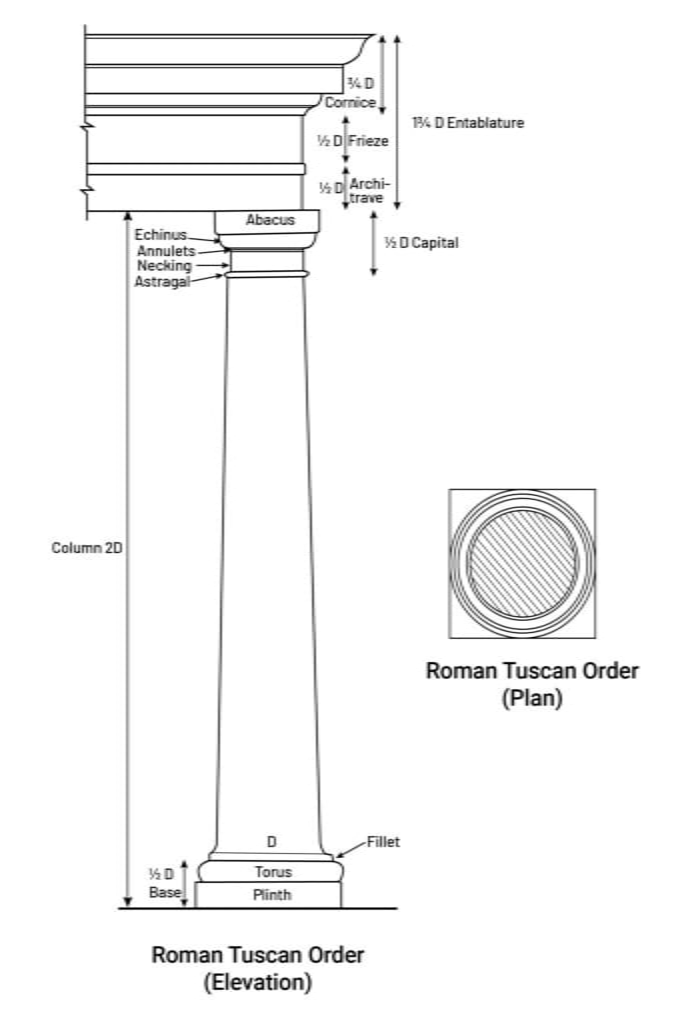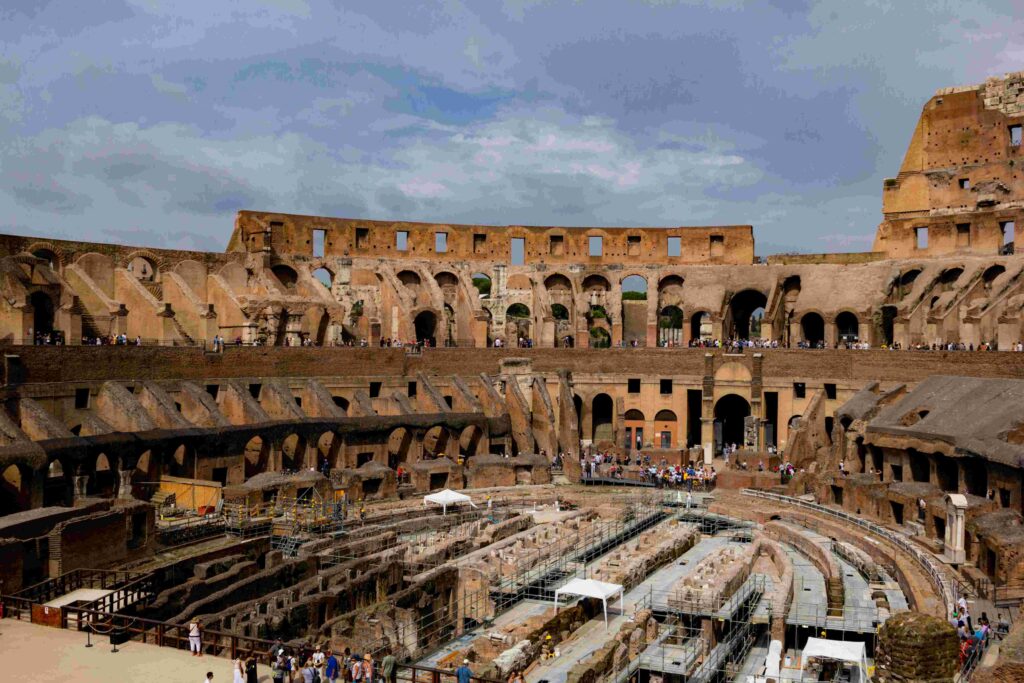Types of Greek Order
Types of Roman Order

What is the Roman Order, and why did they use orders?
In Roman architecture, orders are a distinct classical architectural style and system of proportions that were used for Roman structures like temples or basilicas. Roman architecture has a total of five classical orders among the three orders. Doric, Ionic, and Corinthian were used by the Greeks; the Romans added the composite and Tuscan orders. Each order had a unique look, and they also differed in size. One of the easiest ways to recognize the type of order is by looking at the capital that is present at the top of the column. All of these orders were frequently used as decorative features, although they were used constructively in the temple’s colonnades. The Romans placed their orders on pedestals to gain greater height.
These orders were employed in combination with arches for the decoration of wall surfaces and were often superimposed. The orders were used for buildings with more than one storey, with different orders for each storey, with a robust order being used on the ground floor and a slender order on the second story. This system of construction added grandeur to the majestic buildings of Rome. (Source: World Architecture by G.K Hiraskar, Page 252)
Introduction of Roman Tuscan Order
The Tuscan order is one of the classical orders of Roman architecture; the other four are Ionic, Doric, Corinthian, and Composite. The Tuscan order originated from the Etruscan civilization during the Iron Age. When the Romans took over the Etruscan civilization, they absorbed their culture, and these columns were modified from wood to stone. This order resembles the Doric order and has a simpler base and an unadorned frieze. The Tuscan order had a simplistic structure with a lack of details and decoration, which made it a great choice if construction time and simplicity were required. The Tuscan order was also used at the bottom level of the Colosseum in Rome. [1] [2]

The Roman Tuscan Order
The credit for the invention of this order goes to the Etruscans.
This order is named after Tuscany in Italy. It is a simplified form of the Greek Doric. The order is taken from the famous colonnade that leads to the Church of St. Peter in Rome.
The column is seven times the diameter in height. The base, which is semi-diameter high, consists of a plain square block and a simple torus.
The circular shaft is unfluted. The capital, which is semi-diameter high, consists of square abacus and ovolo echinus.
The entablature, which is 1 whole 3/4 diameter high, consists of an architrave, (1/2 D) frieze (1/2 D) and cornice (3/4 D), which are plain, there being no ornamentation. The moldings are simple and consist of straight lines and circular arcs.
The order lacks the refinement of other Roman orders. (Source: World Architecture by G.K Hiraskar, Page 261)
Features and Characteristics of Roman Tuscan Orders
- Column Shape: The columns were not fluted and have a very solid finish.
- Capital: The capital of the Tuscan column is plain and consists of a rounded, cushion-like echinus without any ornamentation.
- Entablature: The entablature is divided into three main sections: the architrave, frieze, and cornice. The architrave is plain, the frieze is usually unadorned or has simple triglyphs and metopes, and the cornice is straightforward without the elaborate moldings found in other orders.
- Base: Tuscan columns were often constructed directly on top of the stylobate (the uppermost step of the temple platform), with no distinguishing base.
- All the classical orders have decorative or ornamented capital except the Roman Doric and Tuscan orders.
- The Tuscan order is the only Roman order whose shaft has an unfluted solid, smooth finish.
- The Tuscan orders have a simplistic structure and lack of detail or ornamentation.

Proportioning of Roman Classical Orders
Vitruvius, the Augustan architect, gave the proportioning of the Doric, Ionic, and Corinthian Orders but not for the composite Order, which was not evolved until the 1st century A.D.
The proportions of five orders were studied in the Renaissance period by well-known architects like Palladio, Vignola, and Sir William Chambers. These architects worked out the system of measurements of the orders in terms of the lower diameter of the column. (Source: World Architecture by G.K Hiraskar, Page 253)
The following table shows the proportions of the Roman Orders.
| Name of Roman Order | Height of column in terms of lower Dia. | Height of Entablature in Terms of lower Dia. |
| Doric | 8 | 2 |
| Ionic | 9 | 2 whole 1/4 |
| Corinthian | 10 | 2 whole 1/2 |
| Composite | 10 | 2 whole 1/2 |
| Tuscan | 7 | 2 whole 1/3 |
Examples of Roman Tuscan Orders
- Christ Church, Spitalfields, England
- St Paul’s, Covent Garden, England [3]
- Colosseum, Rome
- Temple of Piety, England











